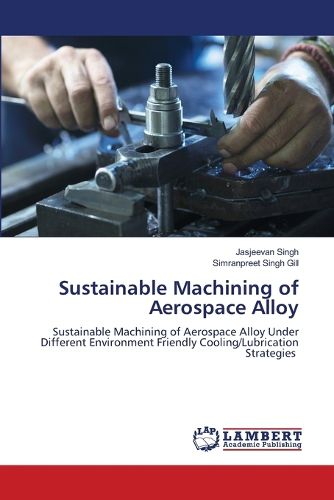Sustainable Machining of Aerospace Alloy
Jasjeevan Singh, Simranpreet Singh Gill

Sustainable Machining of Aerospace Alloy
Jasjeevan Singh, Simranpreet Singh Gill
The turning operation was performed using two levels of cutting speed while the feed rate and depth of cut were kept fixed. The SEM images were analyzed for worn tool surfaces and machined surfaces. The microhardness analysis indicated heat-based attention in the turned workpiece; thus, the heat-based effect was lowest in MQL compared to RHVT, compressed air, and dry conditions. Results manifested that MQL can significantly lower tool tip temperature by up to 16 %, tool wear by up to 102%-106%, average cutting forces by 17% -21%, surface roughness reduced by 11% -21%, and energy consumption by 4.4 -3.7% as compared to dry conditions. The experiments in Stage II were performed on Al7075-T6 alloy by selecting Taguchi's orthogonal array technique with three control factors and four levels for every factor, the experimental design matrix was created via Minitab 17 statistical tool. A depth cut of 1 mm was fixed for all the experiments conducted.
This item is not currently in-stock. It can be ordered online and is expected to ship in approx 2 weeks
Our stock data is updated periodically, and availability may change throughout the day for in-demand items. Please call the relevant shop for the most current stock information. Prices are subject to change without notice.
Sign in or become a Readings Member to add this title to a wishlist.


